In order to understand your ab muscles better, you have to understand your hip flexor muscles. The hip flexors attaches to your spine, pelvis, and your inner thigh bone (collectively called Illiapsoas). From the attachments of the muscles (shown in the picture), you can easily see that flexing the Illiapsaos will bend your torso or raise your legs.
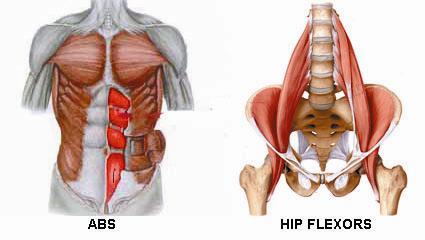
Common Ab Exercise Mistakes
The first picture shows a conventional sit up. The hip flexors is activated once your torso go past 30 degree of flexion as shown in the left picture. The picture on the right shows the proper form for a crunch (see the rounding of the low back).
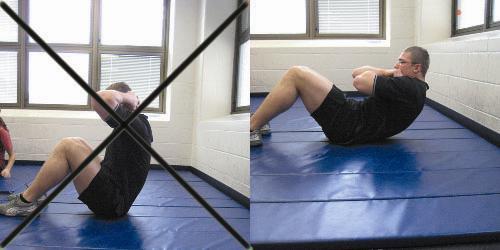
The pictures below show a common mistake when doing leg raises. If you are not conscious of rounding you low back, leg raises is a great exercise for your hip flexors. You will often see low backs coming off the pad because of the pull of the hip flexors on the spine.
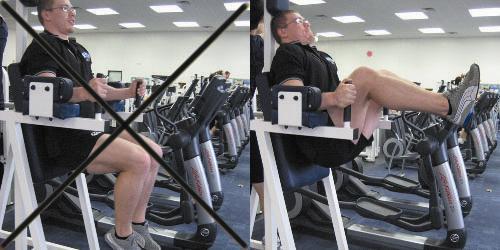
The below exercise is one of the most popular exercise in the gym. Unfortunately, this is another great example of how to engage your hip flexors in your ab exercise. Anchoring your feet or having someone stand on your feet are just different ways to use your hip flexors in your ab exercises.
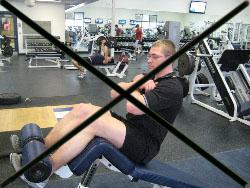
Techniques to Make Your Ab Exercises More Effective
The techniques below help to inhibit the hip flexors or/and activate your abs better.
The first method is based on the principle of Active Insufficiency. Once a muscle has shortened, it becomes “actively insufficient” (or the muscle is unable to contract further). By keeping your legs wide apart, you have already contracted your hip flexors (llliopsoas)and hence they are unable to aid in hip flexion anymore.
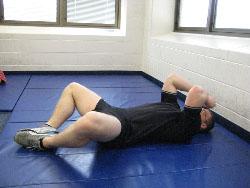
The reason why the knees are bent 90 degree when doing a sit up or a crunch is to inhibit your rectus femoris muscle (also aids in hip flexion) based on the principle of Active Insufficiency.
The second method (also known as the Janda situp) is based on the principle of Reciprocal Inhibition. By pulling on your heels (as shown in the pic), you are contracting your glutes and hamstring, which relaxes you hip flexors and thus isolates your abs better.
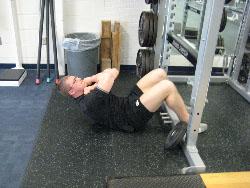
The third method involves squeezing a ball between your knees as you crunch. This helps to isolate your abs as both the abs and adductors have a common insertion point.
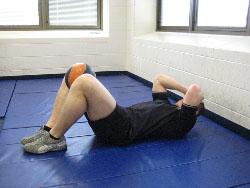
Picture Courtesy: Braden Sowle
Related Articles
>
Original article and pictures take www.exercisebiology.com site
Комментариев нет:
Отправить комментарий